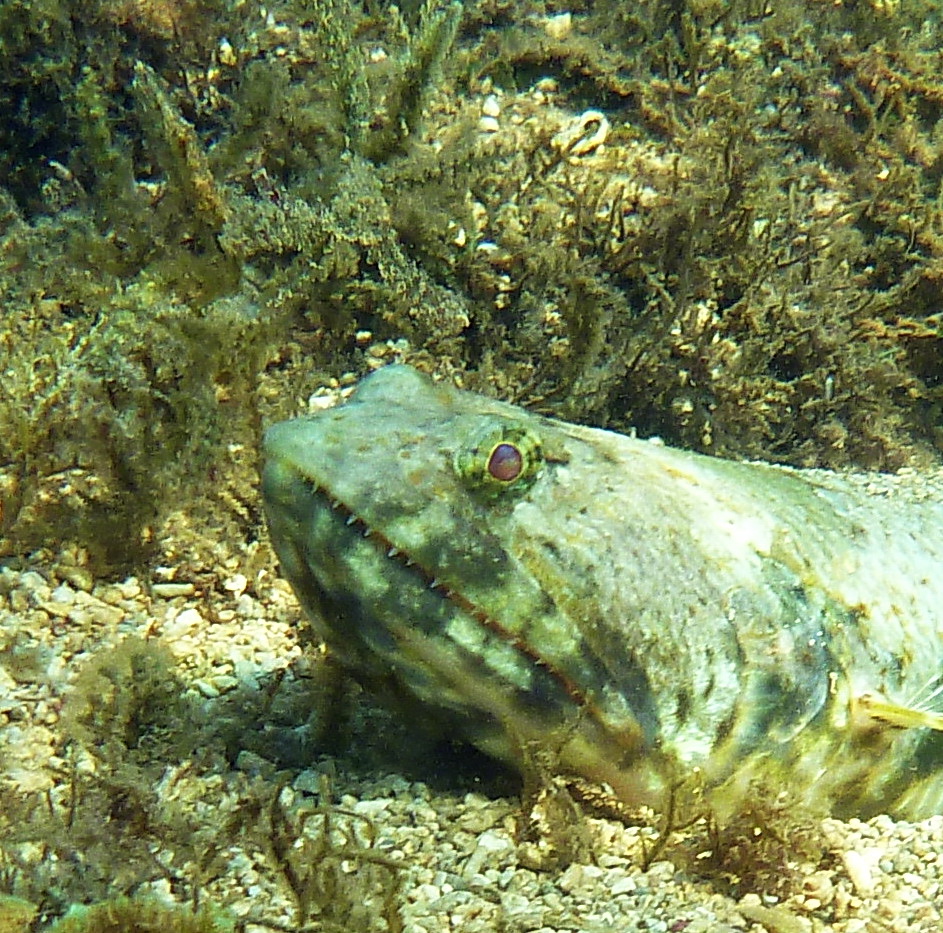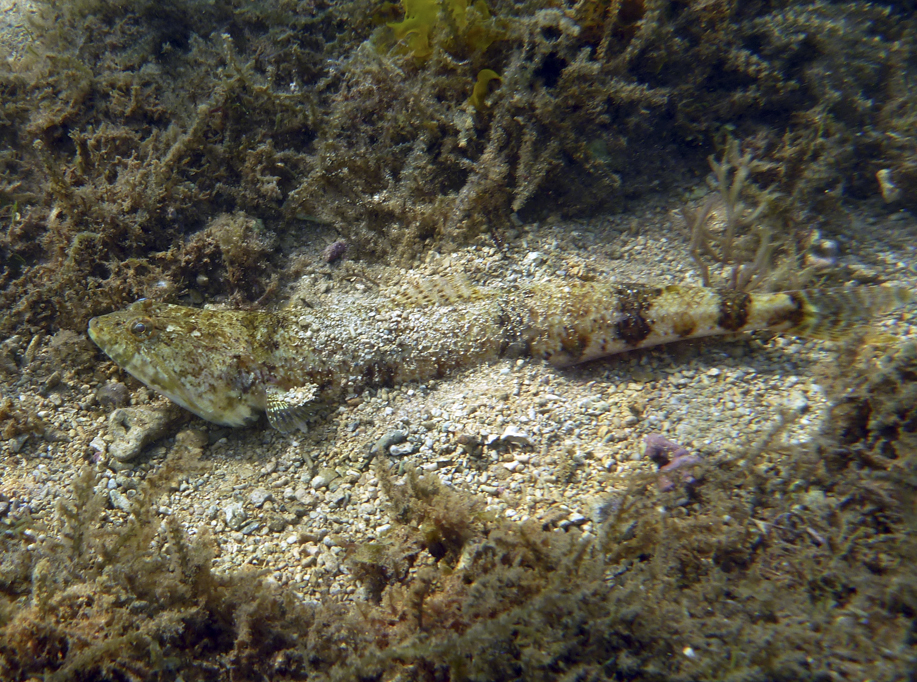Published in the Ocean Watch column, Honolulu Star-Advertiser © Susan Scott
Monday, October 22, 2012

A Hawaiian lizardfish hangs out off Oahu’s North Shore.
My friend Valerie, an avid snorkeler, recently emailed her observation of two lizardfish on the North Shore: “They were nose to nose, about an inch apart. They just stared at each other, then one would place his mouth on the other’s mouth and close it. They would hold that position then let go. I watched until I got cold, about 10 minutes. They kept repeating this ‘biting’ thing. Do you think they were fighting or perhaps mating?”
I think they were weirdos.
The world’s 50 or so lizardfish species, of which Hawaii hosts 15, are all broadcast spawners, meaning that the fish release their gametes into the water and let nature take its course.
Broadcast spawning isn’t as haphazard as it sounds because lizardfish don’t discharge their precious sex cells just any old time. The fish time their trysts.
To understand how lizardfish do that, researchers studied the spawning behavior of the Hawaiian lizardfish, scientific name Synodus ulae. Ulae is also the Hawaiian name for lizardfish, and this particular species is Hawaii’s most common, especially on Oahu’s North Shore.
Because the official common and species names of this fish are local words, you would think the Hawaiian lizardfish is endemic here. It is not. The Hawaiian lizardfish is also native to waters off Japan’s Izu Islands.
There, as well as here, lizardfish, which look like legless lizards and grow to about 12 inches long, lie on sandy seafloors, sometimes burying their bodies in sand. When a fish prey swims within striking range, the lizardfish leaps to snatch it.

In a Miyake-jima (an Izu island) bay, investigators observed the courtship ritual of lizardfish. Throughout the day, males chased females of all sizes, the suitors flaring their gill covers and circling about. When two males approached the same female, a fight broke out, the two males flaring their gill covers and circling about. (Funny how love and war look so similar.)
Eventually a male and female lizardfish settled down to rest side by side. Sometimes the male draped his body over the female.
At dusk, in a rapid upward rush, at 13 feet above the seafloor, the pair released their sperm and eggs simultaneously in a “surprisingly large and conspicuous cloud.” That job done, each fish returned to the seafloor and swam its separate way.
Nowhere in my reading did I find an observation of lizardfish using their mouths to fight, bite or kiss.
Clearly, though, Valerie’s two lizardfish had something in mind. Maybe they were whispering about that shivering woman spying on them while they were trying to hook up. Just a thought.
Thanks, Valerie, for sharing a good moment.
©2012 Susan Scott